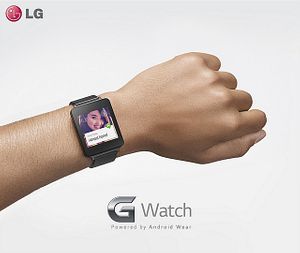If smartwatches may have looked like something of a fad during these past couple of years, today the smartwatch market appears to have great potential, albeit with room for improvement. To date, the majority of gadget manufacturers have released smartwatches following their own rules and offering their own proprietary OS or user interface. More recently though, Google has stepped in and publicly confirmed its interest in this particular segment, revealing that it’s been working on an extension of the Android OS, designed to work on wearable devices.
This new contraption was given the name Android Wear, and during Google I/O the search engine giant revealed most of the features that the system has to offer. In addition to Android Wear, a few gadget manufacturers have also lifted the veil on their first Android Wear-powered devices. Followers of the smartwatch market will be aware that the LG G Watch was being referred to as the “first Android Wear” gadget even before it was unveiled, so it’s no surprise that the G Watch was present at Google I/O. Another manufacturer present at the event was Samsung, confirming that a new smartwatch powered by Google’s platform was indeed in the works, in parallel with the Tizen-powered Gear 2 line-up.
Now, one of the biggest questions on everyone’s mind is how the LG G Watch and the so-called Samsung Gear Live compare to one another. An even bigger question is whether or not these two smartwatches have what it takes to be purchased in large quantities, as watch replacements. Finally, , some people are actually wondering if the entire effort is worth it, thinking that smawrtatches will never become a real and seamless part of our technologically enhanced lives.
Today we’ll try and answer some of these questions and in the process we’ll also talk a bit more about what makes the LG G Watch and the Samsung Gear Live tick, so to speak. Evidently, both smartwatches are being powered by Android Wear, and in essence, they are extremely similar. Aside from certain design cues and a few extra features delivered by the Gear Live (such as the heart rate monitor), these two gadgets basically offer a very similar experience.
In terms of design, neither Samsung nor LG has done an impressive job. The G Watch and the Gear Live have their strengths and weaknesses, but overall they seem pretty ordinary. Both the G Watch and the Gear Live come with swappable bands, and neither of the gadgets distance themselves from the rectangular form factor employed by the majority of smartwatch manufacturers. In a nutshell, we could say that the Gear Live’s design is a bit chunky, and that its curved “back” panel could cause discomfort. The LG G Watch however, is an even worse display, as it delivers an extremely bland rectangular “plasticky” design with no buttons. Even the power button is missing, which means that if you turn off the device from Android Wear’s “Settings” menu, then the only way to turn it back on is by connecting the device to a charger. It’s quite messy, but on the brighter side of things, the G Watch is pretty easy to set up and use, and it also comes with a nice set of watch-faces.
A rather big feature that everyone is probably going to cheer for is an always-on function for the display. Apparently Google has not forgotten that the main function of a smartwatch is to tell the time, and both the G Watch as well as the Gear Live come with an always-on screen that can tell the time on a simple dark background, without eating through the battery.
Speaking of battery life, both gadgets seem to perform similarly and can remain alive and kicking for a few days if left untouched. However, when used intensively, both the G Watch and the Gear Live seem to be capable of keeping the lights on for about a full day. With that in mind, much like your day-to-day smartphone, it seems that these smartwatches will require a daily dose of electricity in order to remain powered on.
As far as the displays go, the Samsung Gear Live packs a 1.63-inch AMOLED panel that delivers brighter whites and darker blacks than the 1.65-inch LCD panel used by the LG G Watch. On the other hand, although the Gear Live comes with a sharper display boasting a resolution of 320 x 320, the G Watch’s inferior 280 x 280 display resolution actually works in its favor, as touch targets are larger, more visible. But regardless of which one of these two smartwatches you would use, both of them fail to offer usability in direct sunlight. Despite the fact that both gadgets can be extremely bright in the dark, they seem perform extremely poorly in direct sunlight.
It seems to me that, although both the LG G Watch and the Samsung Gear Live offer a decent start in the Android Wear world, these gadgets also come with a series of shortcomings that may turn off some prospective customers.
The biggest issue with both smartwatches is that they seem to fail at covering the “watch” part. Sure, they seem smart enough to be valuable extensions to your smartphone, and notifications as well as the “OK Google” function is pretty cool. Sadly, these devices are not fashion statement items, despite the fact that watches, in general, are.
Perhaps the Moto 360 will manage to overcome some of these issues, but as far as the LG G Watch and the Samsung Gear Live go, chances are that these gadgets will not go down in history as the most iconic Android Gear smartwatches ever created.
What are your thoughts on the LG G Watch and the Samsung Gear Live? If given the choice, which one of these gadgets would you rather pick?
Vlad Andrici is editor for gforgames.com and writes about technology issues. Follow Vlad on Google Plus.































